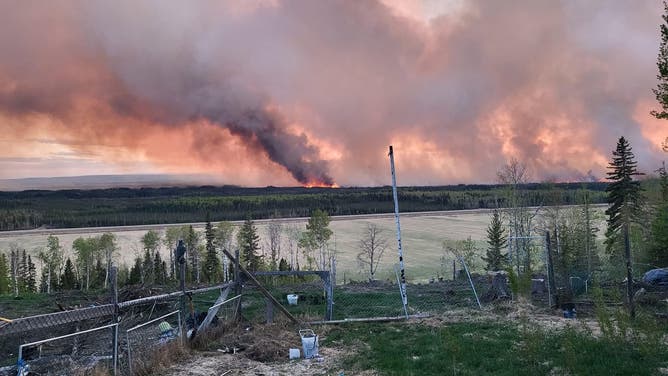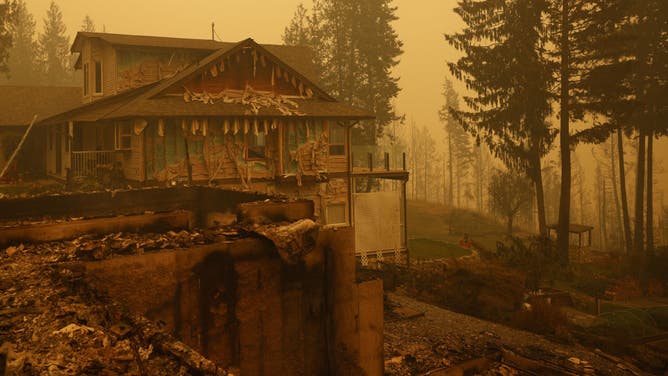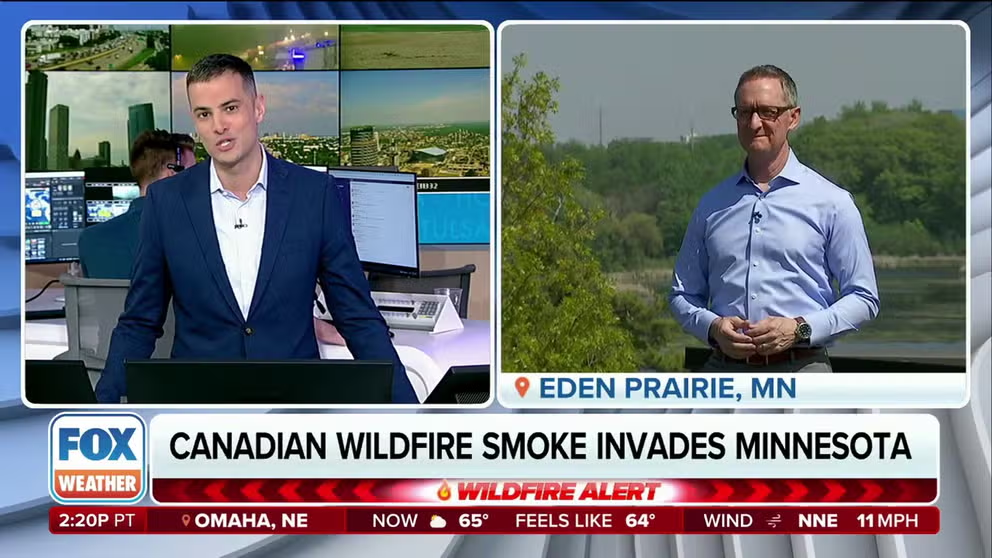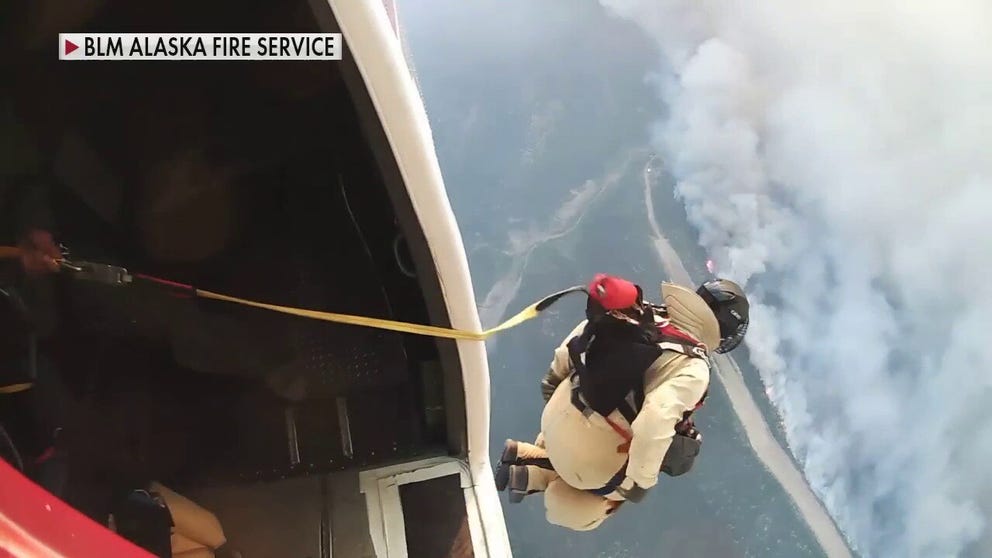What are 'zombie fires'?
These sneaky wildfires overwinter deep in soil and feed on tree roots or buried dead plant debris then resurface in the spring.
What is a zombie fire?
FOX 9 Minneapolis Meteorologist Ian Leonard explains what a zombie fire is and how it lit parts of Canada on fire recently.
Just like in SciFi where zombies are corpses that rise from the dead, zombie fires are wildfires that rise from the dead.
Wildfire flames head deep underground to organic rich soil and don't actually die but, in a sense, hibernate for winter or smolder. They are also called holdover and overwintering fires.
"There are two types of burning – the typical flaming fire that we picture as a forest fire. This is the kind of fire you would see in your fireplace or campfire with dry fuels," explained Merritt Turetsky, fire scientist and Director of Arctic Security for the Center for National Security Initiatives. "But there is another kind of burning – smoldering – that occurs at lower temperatures and can persist even when fuel is wet."
WESTERN WILDFIRES IMPACT SEVERE STORM OUTBREAKS IN CENTRAL US, STUDY WARNS

File: Smoke rises after a zombie fire erupts in Western Canada on May 14, 2024. Wildfires in Western Canada prompted thousands to flee their homes, while 66,000 were on standby to evacuate as a fast-moving blaze threatened another community Saturday.
(Cheyenne Berreault/Anadolu / Getty Images)
Think of the glowing embers in a campfire even if the logs get wet. Smoldering is flameless, can continue for a long time and can occur with very low oxygen levels, like underground, she said.
The fire feeds on peat, a build up of dead plant debris; piles of downed trees and root balls of trees in forests.
"'Zombie fires' are fires that ignite in one fire season, smolder through the winter months under the snow, and re-emerge early in the spring before lightning and human-caused ignitions begin in earnest," wrote three professors, including Turetsky, in an article last year studying forests and wildfires.
HOW THE LAY OF THE LAND AFFECTS WILDFIRE BEHAVIOR
Early start to Canada's wildfire season
Canadian firefighters got no rest over the winter thanks to these zombie fires. After the historic 2023 fire season that charred 44 million acres across our neighbor to the north, about 150 fires overwintered, according to the Canadian Interagency Forest Fire Center. Flames reignited in Western Canada in February.
"Last year’s very severe fire season in Canada, plus persistent drought that continues to affect western Canada, set the stage for more overwintering fires than I personally have ever seen before," Turetsky said.
US WILDFIRE ACTIVITY OFF TO SLOWEST START IN MEMORY
The particularly disappointing snowfall of about 25% of normal in the area set up a near-tinderbox, according to FOX 9 Minneapolis Meteorologist Ian Leonard.
"Once the snowpack has gone and the upper level dries, (the fires) come back to the surface," Leonard said. "They get fueled by the spring winds that we all tend to enjoy, and ‘voilà!’ One fire's burning about 20,000 acres right now."
Minneapolis had the worst air quality in the nation for a day in early May from the blowing smoke.
"This seemingly unusual fire behavior was previously of limited concern as overwintering fires are hard to detect and, we think, were relatively infrequent," wrote Turetsky and coauthors. "As such, we know very little about these fires or their potential impacts."
WHY FIREFIGHTERS ARE FIGHTING FIRE WITH FIRE

File: Property and homes razed by a wildfire in Celista, British Columbia, Canada, on Saturday, Aug. 19, 2023.
(Cole Burston/Bloomberg / Getty Images)
But zombie fires that roar back to life after the winter may not be all that unusual or infrequent, the authors said. The "exceptionally early and intense" 2023 wildfire season in Alberta, Canada could have been fueled by fires that overwintered from the fall of 2022.
Research showed that zombie fires across Canada's Northwest Territories and Alaska caused only 0.8% of the total burned area between 2002 and 2018. But one zombie fire in Alaska in 2008, burned almost 34,000 acres, which accounted for more than a third of all land burned that year.
Drop into wildfires with Alaska's elite smokejumpers
Alaska has vast stretches of wild, open country and is often called the last frontier. So, what happens when wildfires break out? Sometimes the best way to attack the flames is for firefighters to parachute in.
Zombie fires could make permanent changes to the landscape
And forests don't rebound as quickly after a zombie fire.
"Overwintering fires are interesting because they are a way for a bad fire year to continue to impact ecosystems, emissions, and smoke generation into the following year," Turetsky said. "They are important because we know that repeat fires, i.e., when an ecosystem is impacted by multiple fires in a brief amount of time, leads to more severe burning and slower regeneration post-fire."
She and the other authors expect zombie fires to lead to a conversion of land from forest to non-forest.
Satellite remote sensing just made finding and measuring the underground fires possible in 2022. That will enable Turetsky and others to study the zombie fires as the climate evolves.
"The most socially relevant concern relates to carbon emissions and potential feedbacks to climate warming," Turetsky's article stated.
Peatland stores as much as 30% of Earth's carbon. If released by fire, it can create carbon dioxide, a greenhouse gas and climate change factor.

